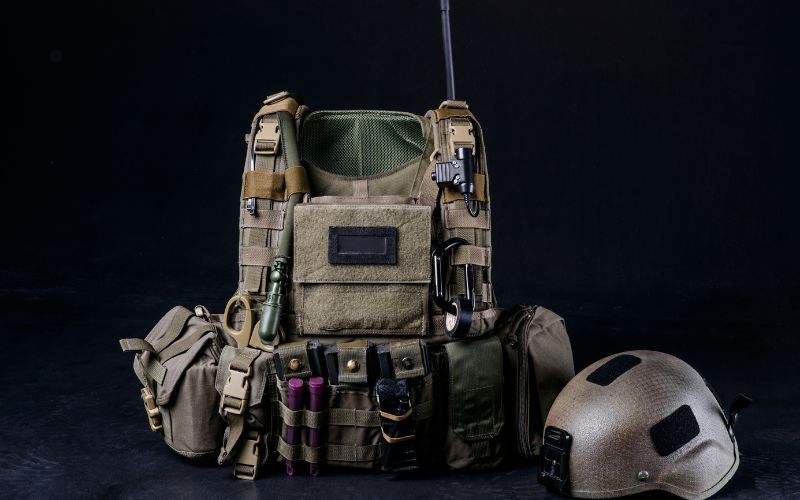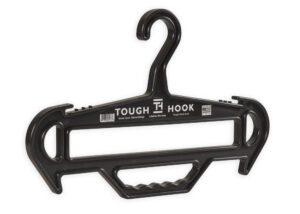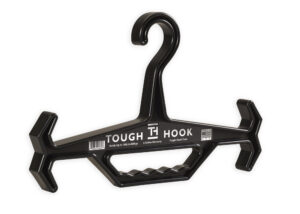Maintenance Tips For Extending The Life Of Your Body Armor

Body armor, which means protection against serious injury or death for police officers, military officers, and security specialists, is one of the most vital components of equipping protection to law enforcement and security persons in high-risk conditions. As with every piece of equipment, however, it must be maintained properly to last long. Failure to do such care may expose the wearer to early malfunction, decreased protective capabilities, and potentially life-threatening vulnerabilities. You are to take good care of your body armor to elongate its lifetime and performance because body armor is specially made from certain materials and is an important solution to hazards.
This article outlines key maintenance tips that will extend the life of your body armor, ensuring that it remains a reliable safeguard when you need it most. From the proper storage method to frequent checks and cleaning processes, you can do everything right so that no damage is inflicted, and your armor will be ready to roll at its best for years to come. Hard plates vs. soft body armor or a mix of both will provide you with peace of mind while ensuring the integrity of your gear with these tips.
Why Is It Important To Properly Care For Body Armor?
We assure you that there is nothing complicated in servicing the armor. However, you should not neglect this process, and there are several good reasons for this:
- Improper maintenance may result in deterioration of protective characteristics, which jeopardizes the user’s safety;
- Regular maintenance allows you to promptly identify any damage that may negatively affect the effectiveness of the product;
- A careful approach helps extend the equipment’s service life and, as a result, save on the purchase of new armor. For a reliable storage option, consider using the Tough Hanger XL.
Therefore, it is worthwhile to understand the nuances in advance. This will allow you always to keep the situation under control.
Tips To Extend The Life Of Your Body Armor
Every model of body armor is different. Even if you have successfully used armor without instructions, new tactical equipment may have specific features regarding materials or washing.
Pay attention to the recommended cleaning frequency, methods, storage conditions, and warnings, if any. For example, almost all materials cannot be washed with aggressive detergents or immersed in water, while others should not be left in direct sunlight. Here are some effective tips to extend the life of your armor:
1. Regular Checking
Practice proves that this stage is the most important in the maintenance process. A visual inspection before each use and a more detailed check monthly or after returning from the positions is recommended. Pay attention to the following aspects:
- The integrity of the outer fabric should be no tears, punctures, or other visible damage.
- Condition of the seams – all elements must be held firmly, and no threads should be visible.
- Fasteners and straps should close and open easily and be visually intact.
- Armor plates: Cracks, dents, and unevenness on the surface are a “red flag,” indicating the need to replace elements immediately.
In some cases, the product can be repaired. However, it would help if you did not do this yourself – it is better to seek help from specialists.
2. Cleaning and Care

This step helps maintain a neat appearance and directly affects the properties of the materials—dirt, sweat, and excess moisture can destroy the protective fibers. To clean the bulletproof vest, you must remove the armor plates from the plate carrier and the pouches, such as the shotgun shell pouch, molle radio pouch, dump pouch, holster, patches, and other elements.
To remove dust, use a soft brush or damp cloth. Use a soap solution for stubborn dirt, but ensure it suits the material.
Afterward, rinse the tile carrier with clean water to remove any remaining detergent. Dry the product naturally – in the shade or a well-ventilated area, away from fire sources and direct sunlight.
3. Proper Storage
If you have several pieces of body armor or do not plan to use it for a certain period, it is worth thinking about where to store the equipment in advance. The optimal conditions are as follows:
- Room temperature – excessive heat can cause materials to deform, and cold can cause them to become excessively brittle;
- Dryness – a damp environment promotes the growth of mold and mildew and reduces the effectiveness of protection;
- Straightened state – it is best to use special chase tactical tough took hanger or place the product on a flat surface to avoid folds and creases;
- Stay as far away from ultraviolet radiation as possible. Direct sunlight will not only cause the fabric to fade but can also negatively affect its strength.
It can be difficult to follow these rules in the field. In this case, you should minimize the negative impact and carefully check the product before further use.
4. Plate Maintenance
The armor plates directly affect the vest’s quality and effectiveness. For them to perform their protective functions to the fullest extent, it is necessary:
- check them for cracks, chips, deformations, dents, and other damage;
- remove dirt with a soft brush or damp cloth without immersing the product in water;
- store them in a dry place, and if they get wet, dry them immediately;
- Avoid falls or strong impacts.
It is also worth remembering that the plates have their own “shelf life.” It is 15-20 years for metal plates, and for ceramic ones, it is from 5 to 7 years.
5. Avoid DIY Modifications
You can find many “tips” and “life hacks” on social networks on how to make a better bulletproof vest, increase the protection class, or even assemble armor yourself. We strongly advise against listening to such recommendations!
It is worth understanding that any changes violate the structure’s integrity so the consequences can be unpredictable. At the same time, we are discussing how body armor works to protect your life, so it is not worth taking risks.
If the old armor does not suit you, it is better to choose a new model – something interesting is always available at our store.
Laundry Tips For Body Armor
When it comes to washing body armor, whether ballistic vests or plate carriers, attention must be taken not to damage the protective materials; here are some key laundry tips regarding body armor:
1. Separate the Armor Panels from the Carrier
Soft Armor: Instruct personnel to remove ballistic panels or inserts before cleaning the Carrier. Soft armor is never submerged or machine-washed.
Hard Plates: If available, remove ceramic, steel, or polyethylene plates. These cannot be cleaned.
2. Cleaning the Carrier
Hand Wash or Low Cycle: If the plate carrier can be machine washed, use a low or delicate cycle to prevent unnecessary wear on the fabric and seams. Otherwise, wash the plate carrier in cold or warm water with a mild detergent to gently clean it without compromising its structure. Regular cleaning will not only keep your gear looking good. Still, it will also help maximize the efficiency of your plate carrier by ensuring the material remains durable and the fit stays secure.
Harsh Chemicals: Never use bleach, fabric softener, or any other chemical, as they may degrade or damage the fabric or the coatings applied.
Air Dry Only: Do not machine dry the Carrier. Hang the Carrier up to air dry and avoid direct sun for fear of weakening the fabric. For a heavy-duty solution, consider using the Tough Hook Rhino Hanger.
3. Cleaning the Ballistic Panels
Wipe with a Damp Cloth: The ballistic panels or hard plates may be wiped with a dampened cloth that contains mild soap. Do not soak them.
No high-pressure cleaning: There should be no high-pressure washers or submerged in water since this may wreck the ballistic material through the impact of water on it with time.
Air drying in a cool area: Place the ballistic panels flat to allow air drying. Avoid hastening the process by using heaters or dryers.
Conclusion
Maintaining body armor with plates is an integral part of their operation. By following the recommendations for proper storage, inspection, cleaning, and maintenance, you can ensure the reliability of your protection in critical situations. Remember that bulletproof vests invest in your safety; proper care will help them serve you long and efficiently.
Frequently Asked Questions
What makes body armor expire?
How the Vest Is Worn. Another factor that can greatly decrease the lifespan of body armor is how it’s worn. Moisture, heat, and flexing can affect the panels and, therefore, the lifespan of body armor. The wearer’s weight will also affect the lifespan of bulletproof vests.
What is the lifespan of body armor?
Most body armor manufacturers believe a bulletproof vest has an average life expectancy of five years. The reason is that the vest’s fibers deteriorate relatively fast, weakening their performance.


